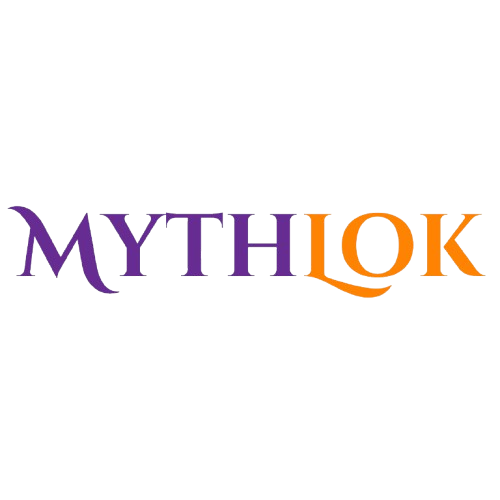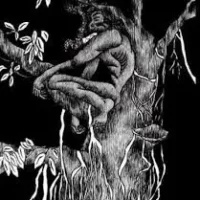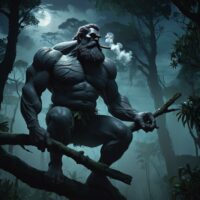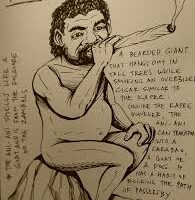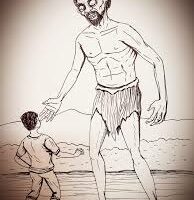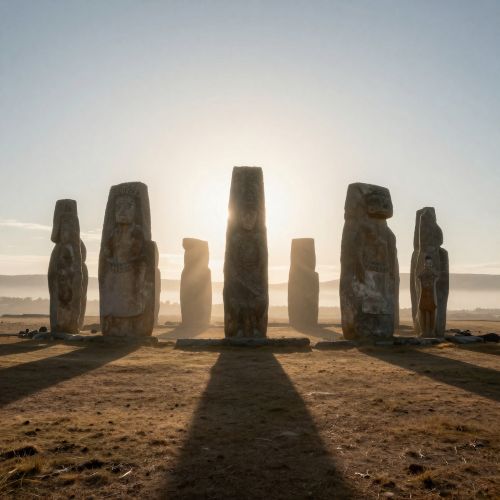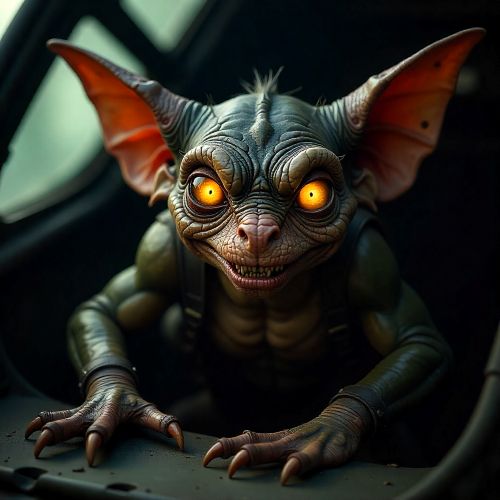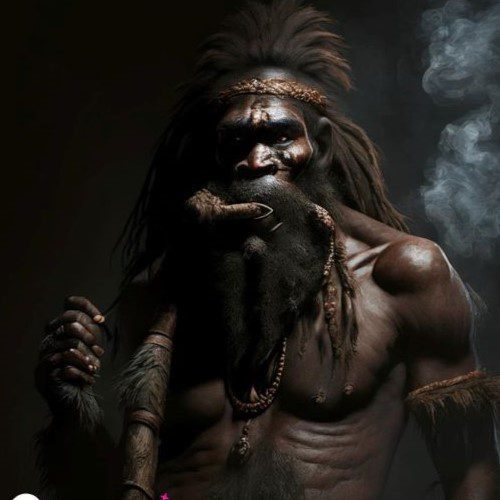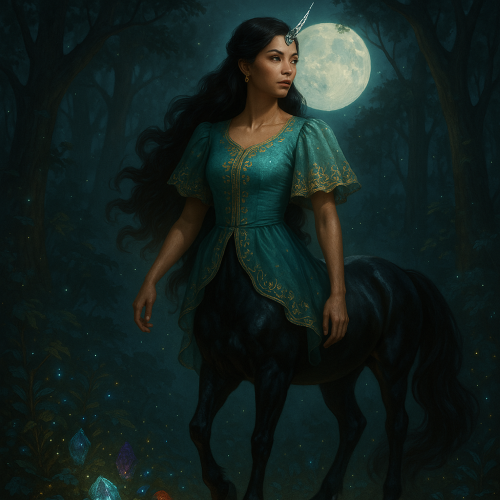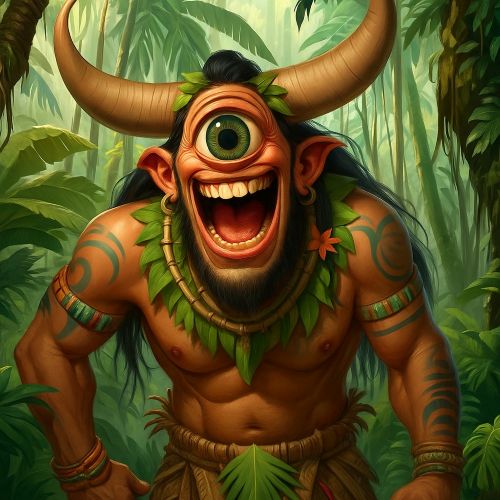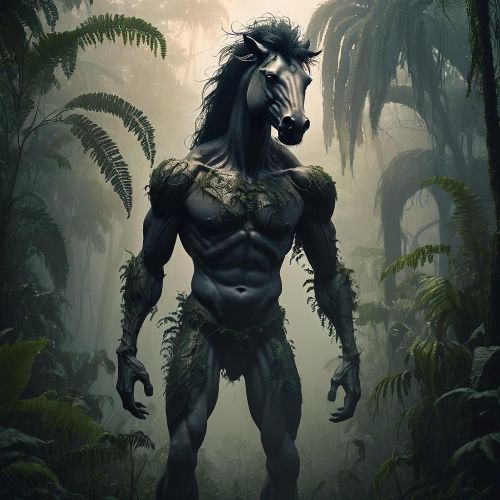Ani Ani : The Shapeshifting Giant
Listen
At a glance
| Description | |
|---|---|
| Origin | Philippine Mythology |
| Classification | Hybrids |
| Family Members | N/A |
| Region | Philippines |
| Associated With | Shapeshifting |
Ani Ani
Introduction
The rich and vibrant landscape of Philippine mythology continues to amaze with its diverse characters, deities, and cryptic beings. One such lesser-known but deeply fascinating figure is the Ani Ani—a mysterious entity that embodies the eerie and the unknown. Existing in the gray areas of myth and oral tradition, Ani Ani is not as widely recognized as creatures like the aswang or tikbalang, but its presence in regional folklore gives it a distinctive place among the supernatural. Emerging from oral storytelling rooted in ancient customs, the tale of Ani Ani offers a glimpse into how local communities tried to understand the natural and spiritual worlds around them. The myth may be obscure, but the impression Ani Ani leaves is unforgettable, marked by chilling appearances and peculiar behaviors.
Physical Traits
Standing at a staggering eighteen feet tall, Ani Ani’s size alone is enough to strike fear into those who cross its path. With its elongated limbs and sharp fingernails, it embodies both brute strength and a sense of lurking danger. Perhaps its most disturbing feature, however, is the pungent, goat-like odor that accompanies its presence—an odor so distinct it often announces the creature’s arrival before it’s even seen. Often spotted sitting high on tree branches, usually those of talisay trees, Ani Ani smokes large cigars in solitude, gazing silently into the night. This behavior draws a comparison to the kapre, another Filipino mythical being, though Ani Ani lacks the kapre’s more social tendencies. Its gaunt figure, coupled with its haunting habits, makes it one of the more spectral giants in local legend.
Family
Unlike many characters in mythology that come with elaborate family trees or divine ancestry, Ani Ani’s origins remain shrouded in mystery. There is no known record of familial ties or lineage associated with this creature. This absence of familial background contributes to its enigmatic identity—unanchored, solitary, and perhaps even unique in the pantheon of Filipino mythical beings. Scholars and folklorists speculate that Ani Ani might be a regional offshoot of more prominent mythological archetypes. Its features suggest a blend of traits borrowed from the aswang and the kapre, possibly shaped by regional interpretations or community fears, with no official myth tracing it to a divine or mortal bloodline.
Other names
The name “Ani Ani” itself is rather curious, and while there are no documented alternative titles or aliases for this creature within Philippine folklore, the name has surfaced in other cultural contexts, often leading to confusion. In Nigeria’s Igbo language, “Ani” refers to the earth goddess, and in Armenian, it is linked to a historical city symbolic of strength and resilience. These parallels are coincidental but add a layer of mystique to the name. In Philippine mythology, however, Ani Ani stands alone with no known variations, making its name both a defining marker and a point of intrigue. The rarity of its mention across regional dialects suggests that it may have been part of very specific local traditions or simply an entity whose mythos was never widely recorded.
Powers and Abilities
What sets Ani Ani apart from other mythical beings is its peculiar range of abilities that seem more psychological than physical. The most prominent of these is its shape-shifting skill—it can take the form of domestic animals such as carabaos, cows, horses, and pigs. This power aligns it with shape-shifting creatures like the aswang but with one significant difference: Ani Ani is not known to feast on human blood. Instead, it prefers to disrupt rather than destroy. It is said to block roads at night, appearing suddenly to confuse, terrify, or mislead travelers. In this way, Ani Ani functions more like a trickster than a predator. Its eerie cigar smoke and foul scent act as sensory warnings—paranormal cues that something is not quite right. Although intimidating, it does not typically harm unless provoked. This makes Ani Ani less of a monster and more of a guardian of thresholds—an embodiment of nature’s unsettling unpredictability.
Modern Day Influence
Despite its obscurity in mainstream narratives, Ani Ani has slowly found new life in the digital age. Independent artists, comic book writers, and folklore enthusiasts have begun to rediscover and reimagine this enigmatic giant. In underground comic series like Mga Tambay sa Tabi-Tabi, Ani Ani occasionally appears as a silent observer, adding atmospheric depth to tales that explore mythological Manila. Digital artists on platforms such as DeviantArt and ArtStation often depict Ani Ani as a brooding forest spirit—its silhouette draped in shadows, eyes glowing faintly through leaves and fog. Filipino folklore blogs and websites have also started to include Ani Ani in curated lists of underappreciated mythological beings, celebrating its unique blend of menace and restraint. Shows like Trese, which spotlight native supernatural beings, have sparked a broader interest in Philippine mythology, making room for creatures like Ani Ani to enter popular consciousness.
Ani Ani’s resurgence isn’t confined to artistic circles. Cultural festivals, university lectures, and even podcast series focusing on regional myths have begun to acknowledge its role in shaping communal fears and traditions. In classrooms and community gatherings where elders share oral histories, Ani Ani’s story continues to haunt the imagination, passed down not with reverence, but with caution. In a world where horror is increasingly manufactured through screens and stories, Ani Ani’s quiet, haunting presence reminds us of an older kind of fear—one rooted in the rustle of leaves at night and the sudden, unexplained silence of the woods.
Related Images
Source
Ani Ani. (n.d.). MythMuseum. Retrieved from https://mythmuseum.weebly.com/ani-ani.html
Ani | Creatures of Sonaria Wiki. (2021, August 20). Fandom. Retrieved from https://creatures-of-sonaria-official.fandom.com/wiki/Ani
A Compendium of Creatures from Philippine Folklore & Mythology. (2016, February 22). The Aswang Project. Retrieved from https://www.aswangproject.com/creatures-mythical-beings-philippine-folklore-mythology/
Not everything is ‘aswang’: Lesser-known creatures in Philippine mythology. (n.d.). Tribune.net.ph. Retrieved from https://archives.tribune.net.ph/2022/08/23/not-everything-is-aswang-lesser-known-mythical-creatures-in-philippines/
Philippine Mythology. (n.d.). Wikipedia. Retrieved from https://en.wikipedia.org/wiki/Philippine_mythology
Philippines Mythical Creatures That Even Filipinos Might Not Know. (2023, April 14). Lindelatravel.com. Retrieved from https://news.lindelatravel.com/2023/04/philippines-mythical-creatures-that-even-filipinos-might-not-know/
Frequently Asked Questions
What is lorem Ipsum?
I am text block. Click edit button to change this text. Lorem ipsum dolor sit amet, consectetur adipiscing elit. Ut elit tellus, luctus nec ullamcorper mattis, pulvinar dapibus leo.
What is lorem Ipsum?
I am text block. Click edit button to change this text. Lorem ipsum dolor sit amet, consectetur adipiscing elit. Ut elit tellus, luctus nec ullamcorper mattis, pulvinar dapibus leo.
What is lorem Ipsum?
I am text block. Click edit button to change this text. Lorem ipsum dolor sit amet, consectetur adipiscing elit. Ut elit tellus, luctus nec ullamcorper mattis, pulvinar dapibus leo.
What is lorem Ipsum?
I am text block. Click edit button to change this text. Lorem ipsum dolor sit amet, consectetur adipiscing elit. Ut elit tellus, luctus nec ullamcorper mattis, pulvinar dapibus leo.
What is lorem Ipsum?
I am text block. Click edit button to change this text. Lorem ipsum dolor sit amet, consectetur adipiscing elit. Ut elit tellus, luctus nec ullamcorper mattis, pulvinar dapibus leo.

